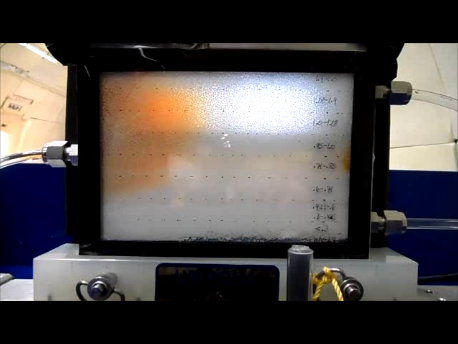Capillary Pressure Gradient Gas-Liquid Separation
This 3-year research effort culminated in the design and testing of a zero-g demonstration prototype. During zero-g testing, Capillary Pressure Gradient (CPG) cartridges prepared with hydrophilic (glass) and hydrophobic (Teflon) media during the second year’s work were each evaluated. Results obtained from ground testing at 1-g were compared to those obtained at reduced gravities spanning Martian (1/3-g), Lunar (1/6-g) and zero-g. These comparisons clearly demonstrate the relative strength of the CPG phenomena and the efficacy of its application in meeting NASA’s unique gas-liquid separation (GLS) requirements in non-terrestrial environments. The videos linked below show that in 1-g operation, normal buoyancy effects result in gas bubbles passing through the upper outlet port per our everyday experience. However, owing to capillary pressure gradient forces, as local gravity is reduced below 1-g, the gas bubbles separate to the lower outlet port demonstrating that the capillary pressure gradient has become the controlling/dominant separation force.
 |
 |
|
Earth Gravity |
Mars Gravity |
 |
 |
|
Lunar Gravity |
Zero Gravity |
 |
 |
|
Ground Test - Glass Media |
Ground Test - Teflon Media |
